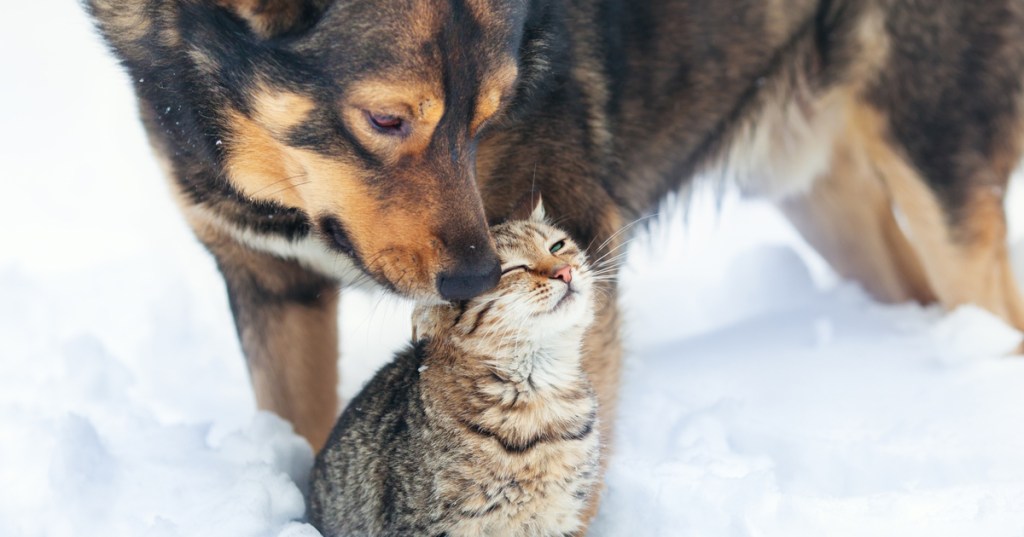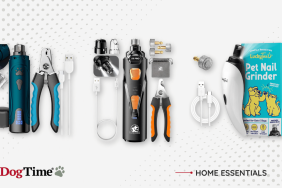Ah, the perils of winter: snow, slush, sleet, ice, frigid temperatures, and rock-salt laden highways and byways. The human variety can bundle up, slather on some lip balm, protect exposed skin, and venture out into nature’s cold bounty well-prepared.
Protecting our feline and canine family members is our responsibility, so here we dispel winter myths and provide snowball-sized facts to keep pets safe throughout winter’s fury.
Myth: Unlike summertime where a car acts as a greenhouse and can cause harm and even death to pets, a pet is safer in a car during winter months.
Fact: Pets can freeze to death even in a short period of time. Cars act as a refrigerator in cold months. A dog alone in a car, no matter the season, is a target for thieves.
Myth: All ice melts are created equal.
Fact: Not all ice melts are formulated to keep pets safe. Pet-safe ice melts like Morton Safe-T-Pet are salt- and chloride-free, which is safer on pet paws and stomachs. Never use a human grade ice melt, and always sprinkle Safe-T-Pet on sidewalks; do not pile product and risk Fido or Fluffy’s health.
Myth: A dog’s pads protect them from all elements of weather.
Fact: Though a dog’s pads contain much fatty tissue that does not freeze as easily as other tissues, protection against scuffing, scraping, cutting, and ice damage is crucial in winter months. Ice cubes and “snowballing” may occur in the delicate areas between toes and pads. Protective booties or a product like Musher’s Secret, which is used on sledding dogs, can help ease extreme conditions on sensitive pads.
Myth: Dogs do not absorb antifreeze or harmful chemicals on walks through their paws.
Fact: A dog’s pads are more resilient than other parts of his body, but chemicals can be absorbed through them. In turn, chemicals like antifreeze can be licked by dogs and cause severe problems. Wipe dog pads off thoroughly after a walk, perhaps using some warm water and a washcloth to melt any ice balls that may have formed on the feet.
Myth: Coats are for show and really do not keep pets warm in the winter months since animals have a natural fur coat.
Fact: Dogs and cats get cold, particularly short-haired breeds, senior citizens, puppies, and pets with medical conditions. Look for an insulated sweater with a turtleneck, that covers the belly, and that allows for protection from neck to tip of tail.
Myth: Dogs should gain weight in the winter to keep their fat ratio up and stay warm.
Fact: Not always. Though dogs are more sedentary in winter months, gaining weight as a form of insulation is not always advised. Indoor dogs who participate in strenuous activities or winter sports may require additional food in colder months. A recent study from the Association for Pet Obesity revealed that 53 percent of cats and 55 percent of dogs are overweight or obese in the United States. Keep a pet’s heart, organs, and joints healthy and keep an eye on their weight year round.
Myth: Thought a humidifier may help people, it does not do much for our pets during winter heating season.
Fact: Dry air in the home can make pets itchier, cause dry noses, upper respiratory infections, more dander, and dry throats. Consider a humidifier, talk to the veterinarian about skin conditioners and fatty acid supplements for healthy skin.
Myth: Fleas will not affect my pet during the winter months.
Fact: Though fleas may not survive in brutal winter temperatures outside, the warmth of home means fleas gravitate towards indoor comfrort where they can affect pets. Using a natural, safer product such as Flea Flicker! Tick Ticker! from Ark Naturals means no chemicals and a safe alternative for pest control and prevention during colder months. Always consult a veterinarian with any questions.
About the author: Carol Bryant has traveled with dogs for over 18 years and is touted as a dog product and travel expert. A frequent media contributor, Carol has appeared on Animal Radio and Oprah Radio’s Gayle King Show, WBAL-TV, News12CT, and as a guest speaker at conferences and seminars about social media, writing, dogs and dog travel. She is also a repeat nominee from the Dog Writers Association of America. Visit her blog at www.fidoseofreality.com and the FIDO Friendly magazine blog at www.fidofriendly.com/blog, winner of the Best Dog Blog from DogTime Media.









